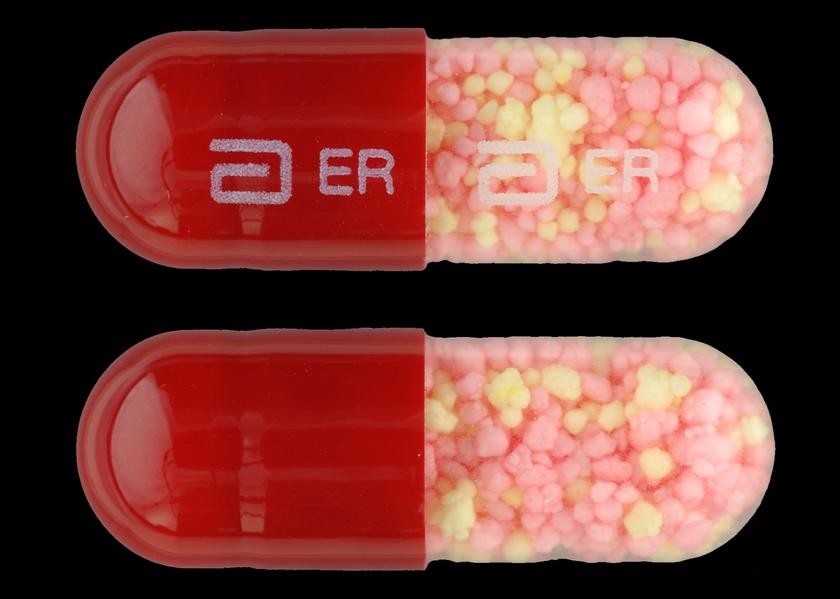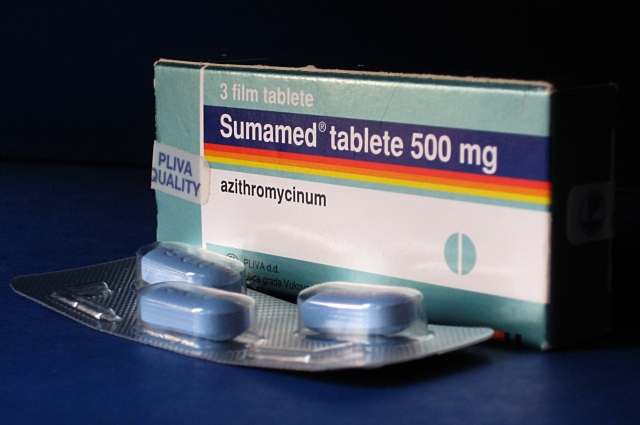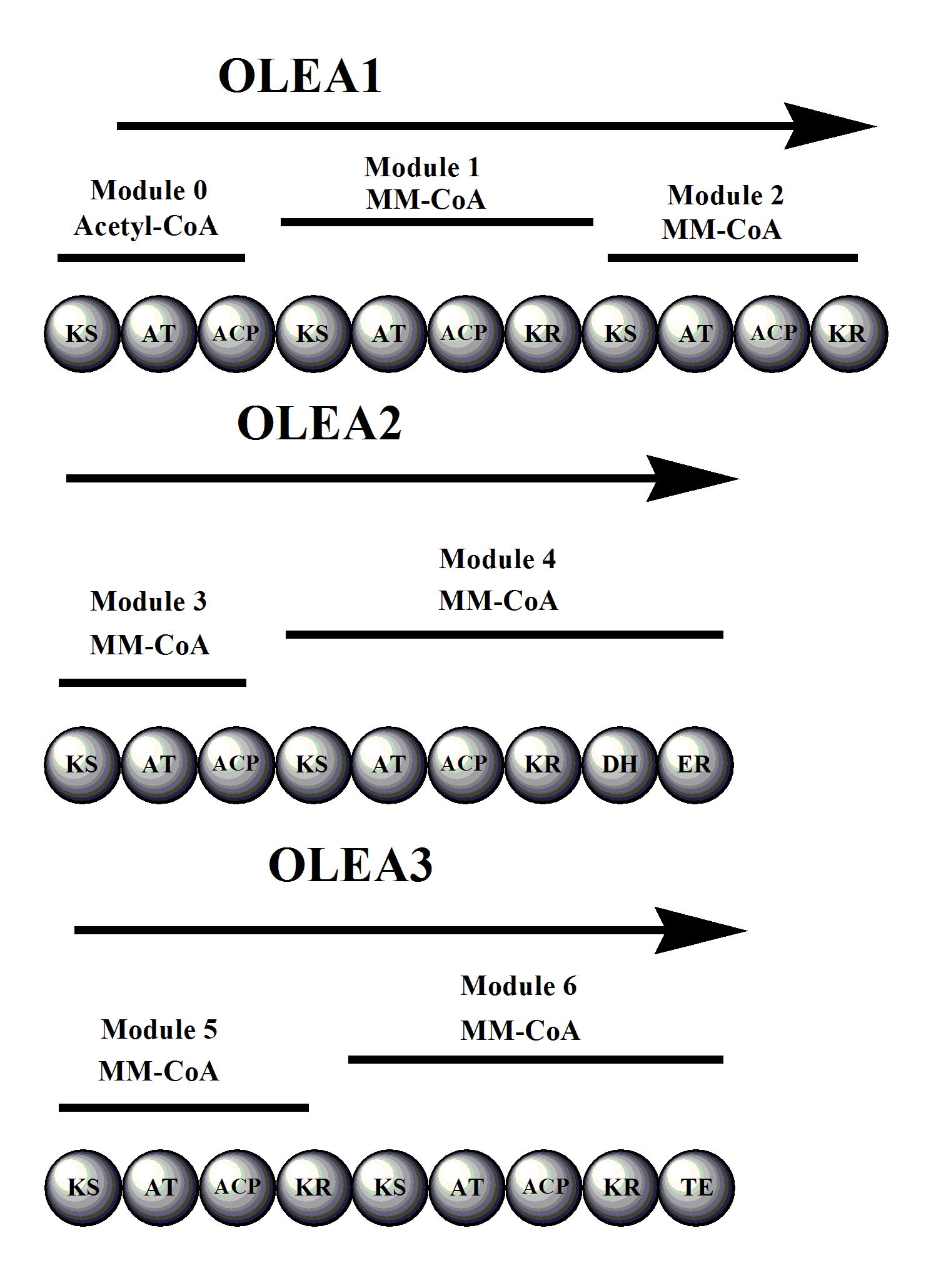|
Desosamine
Desosamine is a 3-(dimethylamino)-3,4,6-trideoxyhexose found in certain macrolide, macrolide antibiotics (contain a high level of microbial resistance) such as the commonly prescribed erythromycin, azithromycin, Clarithromycin, clarithroymcin, methymycin, narbomycin, oleandomycin, Pikromycin, picromycin and roxithromycin. As the name suggests, these macrolide antibiotics contain a macrolide or lactone ring and they are attached to the ring Desosamine which is crucial for bactericidal activity. The biological action of the desosamine-based macrolide antibiotics is to inhibit the bacterial ribosomal protein synthesis. These antibiotics which contain Desosamine are widely used to cure bacterial-causing infections in human respiratory system, skin, muscle tissues, and urethra. Discovery Although desosamine has been found in many macrolide antibiotics, the complete chemical structure of desosamine was not determined until 1962. Nuclear magnetic resonance spectroscopy data was used to ... [...More Info...] [...Related Items...] OR: [Wikipedia] [Google] [Baidu] |
Pikromycin
Pikromycin was studied by Brokmann and Hekel in 1951 and was the first antibiotic macrolide to be isolated. Pikromycin is synthesized through a type I polyketide synthase system in ''Streptomyces venezuelae'', a species of Gram-positive bacterium in the genus ''Streptomyces''. Pikromycin is derived from narbonolide, a 14-membered ring macrolide. Along with the narbonolide backbone, pikromycin includes a desosamine sugar and a hydroxyl group. Although Pikromycin is not a clinically useful antibiotic, it can be used as a raw material to synthesize antibiotic ketolide compounds such as Erythromycin, ertythromycins and new epothilones. Biosynthesis The pikromycin polyketide synthase of ''Streptomyces venezuelae'' contains four polypeptides: PikAI, PikAII, PikAIII, and PikAIV. These polypeptides contain a loading module, six extension molecules, and a thioesterase domain that terminated the biosynthetic procedure. Recently electron cryo-microscopy have been used to determine sub-n ... [...More Info...] [...Related Items...] OR: [Wikipedia] [Google] [Baidu] |
Macrolide
The Macrolides are a class of natural products that consist of a large macrocyclic lactone ring to which one or more deoxy sugars, usually cladinose and desosamine, may be attached. The lactone rings are usually 14-, 15-, or 16-membered. Macrolides belong to the polyketide class of natural products. Some macrolides have antibiotic or antifungal activity and are used as pharmaceutical drugs. Rapamycin is also a macrolide and was originally developed as an antifungal, but is now used as an immunosuppressant drug and is being investigated as a potential longevity therapeutic. Macrolides are bacteriostatic in that they suppress or inhibit bacterial growth rather than killing bacteria completely. Definition In general, any macrocyclic lactone having greater than 8-membered rings are candidates for this class. The macrocycle may contain amino nitrogen, amide nitrogen (but should be differentiated from cyclopeptides), an oxazole ring, or a thiazole ring. Benzene rings are exclude ... [...More Info...] [...Related Items...] OR: [Wikipedia] [Google] [Baidu] |
Erythromycin
Erythromycin is an antibiotic used for the treatment of a number of bacterial infections. This includes respiratory tract infections, skin infections, chlamydia infections, pelvic inflammatory disease, and syphilis. It may also be used during pregnancy to prevent Group B streptococcal infection in the newborn, as well as to improve delayed stomach emptying. It can be given intravenously and by mouth. An eye ointment is routinely recommended after delivery to prevent eye infections in the newborn. Common side effects include abdominal cramps, vomiting, and diarrhea. More serious side effects may include ''Clostridium difficile'' colitis, liver problems, prolonged QT, and allergic reactions. It is generally safe in those who are allergic to penicillin. Erythromycin also appears to be safe to use during pregnancy. While generally regarded as safe during breastfeeding, its use by the mother during the first two weeks of life may increase the risk of pyloric stenosis in th ... [...More Info...] [...Related Items...] OR: [Wikipedia] [Google] [Baidu] |
Azithromycin
Azithromycin, sold under the brand names Zithromax (in oral form) and Azasite (as an eye drop), is an antibiotic medication used for the treatment of a number of bacterial infections. This includes middle ear infections, strep throat, pneumonia, traveler's diarrhea, and certain other intestinal infections. Along with other medications, it may also be used for malaria. It can be taken by mouth or intravenously. Common side effects include nausea, vomiting, diarrhea and upset stomach. An allergic reaction, such as anaphylaxis, QT prolongation, or a type of diarrhea caused by ''Clostridium difficile'' is possible. No harm has been found with its use during pregnancy. Its safety during breastfeeding is not confirmed, but it is likely safe. Azithromycin is an azalide, a type of macrolide antibiotic. It works by decreasing the production of protein, thereby stopping bacterial growth. Azithromycin was discovered in 1980 by the Yugoslav pharmaceutical company Pliva and approved f ... [...More Info...] [...Related Items...] OR: [Wikipedia] [Google] [Baidu] |
Clarithromycin
Clarithromycin, sold under the brand name Biaxin among others, is an antibiotic used to treat various bacterial infections. This includes strep throat, pneumonia, skin infections, ''H. pylori'' infection, and Lyme disease, among others. Clarithromycin can be taken by mouth as a pill or liquid. Common side effects include nausea, vomiting, headaches, and diarrhea. Severe allergic reactions are rare. Liver problems have been reported. It may cause harm if taken during pregnancy. It is in the macrolide class and works by slowing down bacterial protein synthesis. Clarithromycin was developed in 1980 and approved for medical use in 1990. It is on the World Health Organization's List of Essential Medicines. Clarithromycin is available as a generic medication. It is made from erythromycin and is chemically known as 6-O-methylerythromycin. Medical uses Clarithromycin is primarily used to treat a number of bacterial infections including pneumonia, ''Helicobacter pylori'', and as an ... [...More Info...] [...Related Items...] OR: [Wikipedia] [Google] [Baidu] |
Oleandomycin
Oleandomycin is a macrolide antibiotic. It is synthesized from strains of ''Streptomyces antibioticus''. It is weaker than erythromycin. It used to be sold under the brand name Sigmamycine, combined with tetracycline, and made by the company Rosa-Phytopharma in France. Medical use and availability Oleandomycin inhibits the bacteria responsible for upper respiratory tract infections. Its spectrum of activity includes bacteria in the ''Staphylococcus'' and ''Enterococcus'' genera. The MIC for oleandomycin is 0.3-3 µg/ml for ''Staphylococcus aureus''. Oleandomycin is approved as a veterinary antibiotic in some countries. It has been approved as a swine and poultry antibiotic in the United States. However, it is currently only approved in the United States for production uses. Brand names * Mastalone – Oleandomycin, oxatetracycline, neomycin – Zoetis Australia and Pfizer Animal Health * Mastiguard – Oleandomycin, oxatetracycline – Stockguard Animal Health * Forme ... [...More Info...] [...Related Items...] OR: [Wikipedia] [Google] [Baidu] |
Roxithromycin
Roxithromycin is a semi-synthetic macrolide antibiotic. It is used to treat respiratory tract, urinary and soft tissue infections. Roxithromycin is derived from erythromycin, containing the same 14-membered lactone ring. However, an N-oxime side chain is attached to the lactone ring. It is also currently undergoing clinical trials for the treatment of male-pattern hair loss. It was patented in 1980 and approved for medical use in 1987. Roxithromycin is available under several brandnames. Roxithromycin is not available in the United States. Roxithromycin is available in Australia, France, Germany, Israel, South Korea and New Zealand. Roxithromycin has also been tested to possess antimalarial activity. Side effects Most common side effects are gastrointestinal; diarrhoea, nausea, abdominal pain and vomiting. Less common side effects include central or peripheral nervous system events such as headaches, dizziness, vertigo, and also the rarely seen rashes, abnormal liver functi ... [...More Info...] [...Related Items...] OR: [Wikipedia] [Google] [Baidu] |
Nuclear Magnetic Resonance
Nuclear magnetic resonance (NMR) is a physical phenomenon in which nuclei in a strong constant magnetic field are perturbed by a weak oscillating magnetic field (in the near field) and respond by producing an electromagnetic signal with a frequency characteristic of the magnetic field at the nucleus. This process occurs near resonance, when the oscillation frequency matches the intrinsic frequency of the nuclei, which depends on the strength of the static magnetic field, the chemical environment, and the magnetic properties of the isotope involved; in practical applications with static magnetic fields up to ca. 20 tesla, the frequency is similar to VHF and UHF television broadcasts (60–1000 MHz). NMR results from specific magnetic properties of certain atomic nuclei. Nuclear magnetic resonance spectroscopy is widely used to determine the structure of organic molecules in solution and study molecular physics and crystals as well as non-crystalline materials. ... [...More Info...] [...Related Items...] OR: [Wikipedia] [Google] [Baidu] |
Enzyme
Enzymes () are proteins that act as biological catalysts by accelerating chemical reactions. The molecules upon which enzymes may act are called substrates, and the enzyme converts the substrates into different molecules known as products. Almost all metabolic processes in the cell need enzyme catalysis in order to occur at rates fast enough to sustain life. Metabolic pathways depend upon enzymes to catalyze individual steps. The study of enzymes is called ''enzymology'' and the field of pseudoenzyme analysis recognizes that during evolution, some enzymes have lost the ability to carry out biological catalysis, which is often reflected in their amino acid sequences and unusual 'pseudocatalytic' properties. Enzymes are known to catalyze more than 5,000 biochemical reaction types. Other biocatalysts are catalytic RNA molecules, called ribozymes. Enzymes' specificity comes from their unique three-dimensional structures. Like all catalysts, enzymes increase the reaction ra ... [...More Info...] [...Related Items...] OR: [Wikipedia] [Google] [Baidu] |
TDP-glucose
Thymidine diphosphate glucose (often abbreviated dTDP-glucose or TDP-glucose) is a nucleotide-linked sugar consisting of deoxythymidine diphosphate linked to glucose. It is the starting compound for the syntheses of many deoxysugars. Biosynthesis DTDP-glucose is produced by the enzyme glucose-1-phosphate thymidylyltransferase and is synthesized from dTTP and glucose-1-phosphate. Pyrophosphate is a byproduct of the reaction. Uses within the cell DTDP-glucose goes on to form a variety of compounds in nucleotide sugars metabolism. Many bacteria utilize dTDP-glucose to form exotic sugars that are incorporated into their lipopolysaccharides or into secondary metabolites such as antibiotics An antibiotic is a type of antimicrobial substance active against bacteria. It is the most important type of antibacterial agent for fighting bacterial infections, and antibiotic medications are widely used in the treatment and prevention o .... During the syntheses of many of these e ... [...More Info...] [...Related Items...] OR: [Wikipedia] [Google] [Baidu] |
Deoxy Sugar
Deoxy sugars are sugars that have had a hydroxyl group replaced with a hydrogen atom. Examples include: * Deoxyribose, or 2-deoxy-D-ribose, a constituent of DNA * Fucose, or 6-deoxy-L-galactose, main component of fucoidan of brown algae, and present in N-linked glycans * Fuculose, or 6-deoxy-L-tagatose, one of the important components of avian influenza virus particles * Rhamnose, or 6-deoxy-L-mannose, present in plant glycosides In ''Escherichia coli'' bacteria, deoxyribose sugars are synthesized via two different pathways - one pathway involves aldol condensation, whereas the other pathway is conversion of a ribose sugar into a deoxyribose sugar by means of changes on the nucleotide or nucleoside level. Deoxyribose is synthesized through the reduction of ribose. Deoxyribose is derived from the same precursor as ribose being that the reduction of the sugar with the extra hydroxyl group results in the deoxy-sugar, which has its hydroxyl group replaced with a hydrogen atom. D ... [...More Info...] [...Related Items...] OR: [Wikipedia] [Google] [Baidu] |




